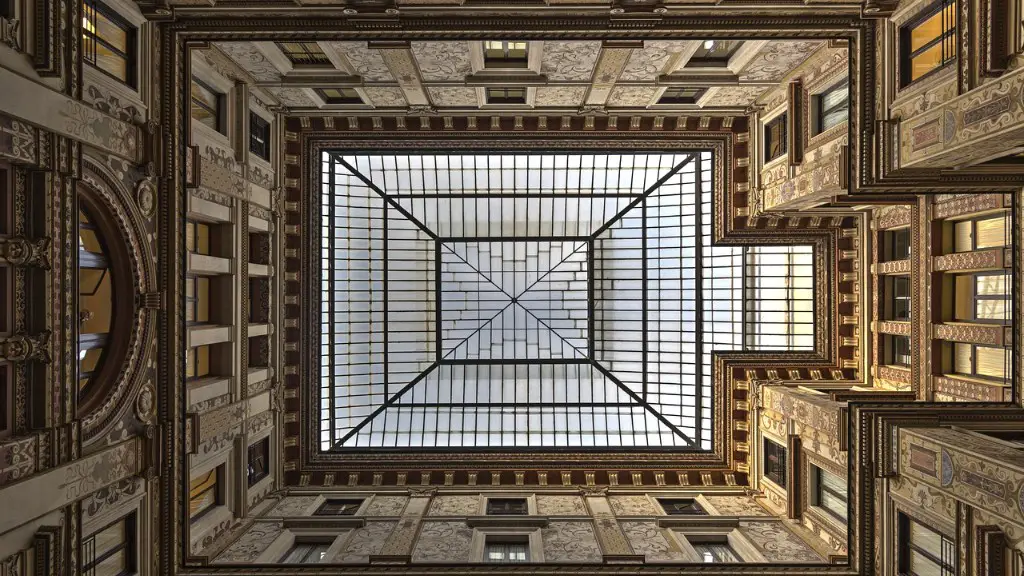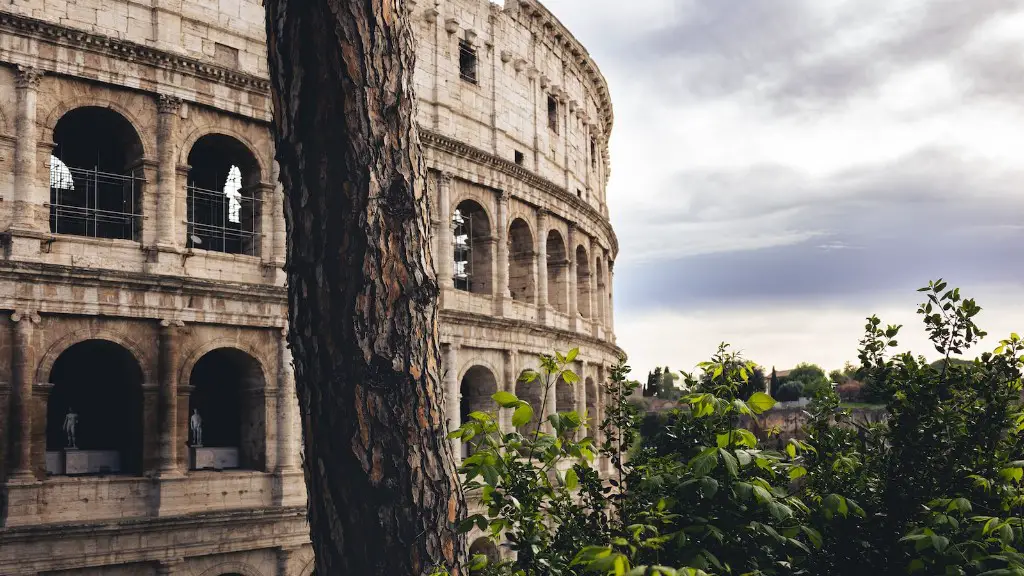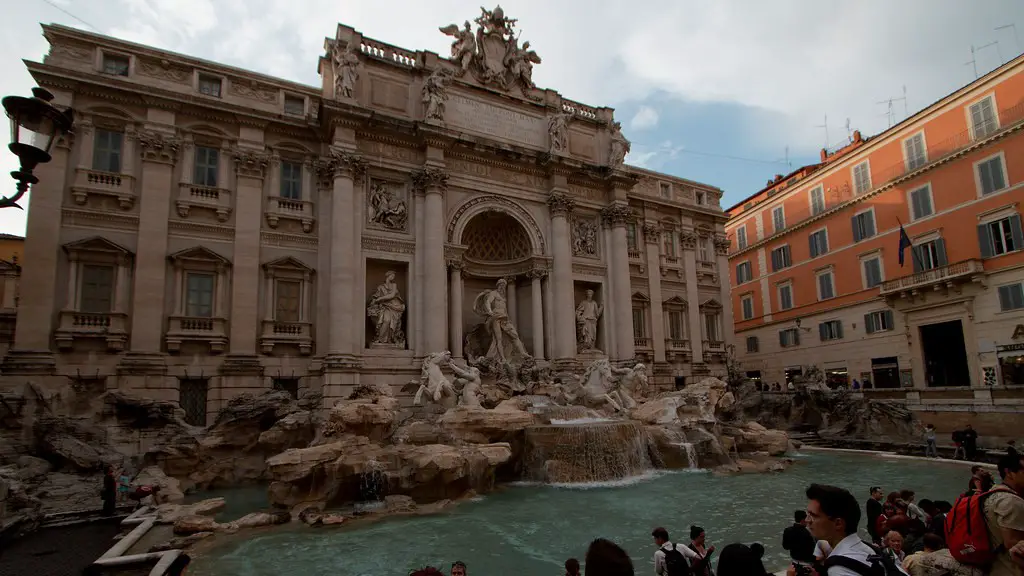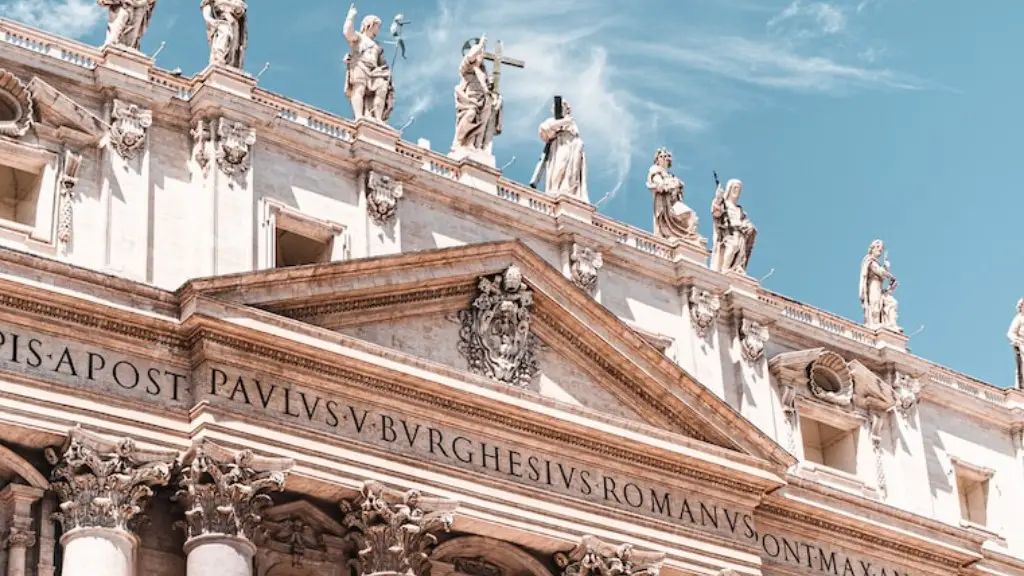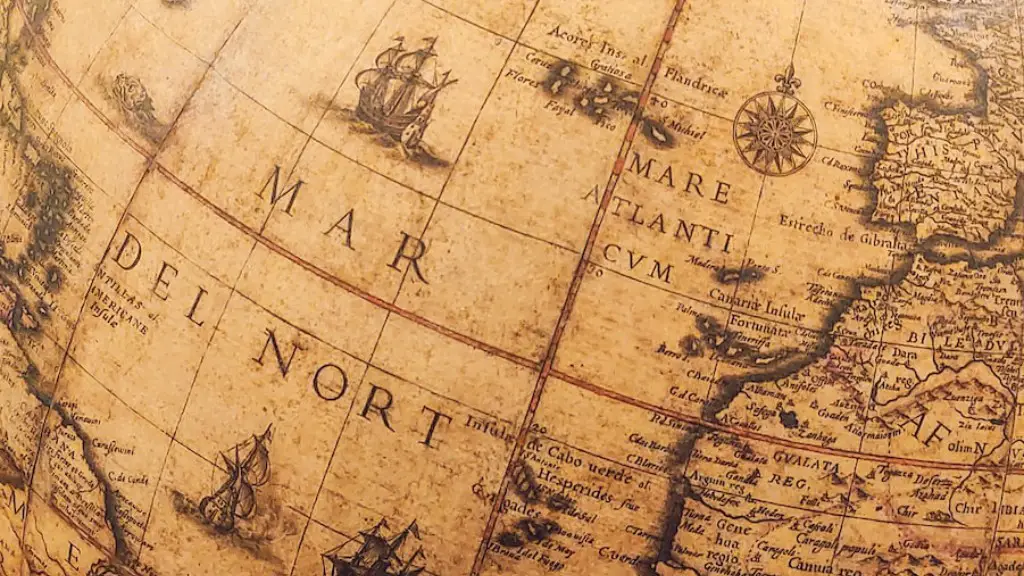Ancient Rome’s conversion to Christianity is one of the most significant events in history that affected the development of Western culture and is a founding event that shapes the world’s religious landscape today. To fully comprehend why Rome converted to Christianity and how it happened, one must look at the various factors that motivated this momentous transformation.
In the early days of the Roman Empire, the ruling classes were polytheistic and believed in multiple gods, each with their own area of control. This polytheistic system allowed dedication to a large variety of deities, as one with wealth would dedicate to gods of abundance and one with soldiering might dedicate to gods of war. This system had a wide reach, at times even reaching to the public. Much of Rome’s polytheistic beliefs were held in the Pantheon and other temples which, though still standing today, are a fading reminder of Romans’ polytheistic past.
Christianity spread to Rome in the first century. At that time, it was a persecuted religion and its followers lived in isolation from their Roman neighbors. Christianity began to grow in popularity in the second century, mainly due to converts from the ranks of the Roman aristocracy, who had become disillusioned by the polytheistic world. The reasons these aristocrats converted to Christianity may have been motivated by political, or personal, purposes.
As Christianity began to thrive in Rome, it had to face a barrage of opposition from the political, philosophical and legal elite. Christianity had ideas that clashed with the state’s traditional ideas and law which hindered its growth. It was not until the third century when Emperor Constantine I declared religious freedom in Rome, known as the Edict of Milan, that Christianity began to gain a more meaningful foothold in the public’s consciousness.
As Christianity spread and began to become more accepted by the Roman populace, Christianity had to develop a unique set of beliefs to differentiate itself from Rome’s polytheistic culture. Christianity presented the idea of monotheism, a belief in a single omnipotent God, which was in stark contrast to the multiple gods of Rome. Christianity also presented built-in rituals such as baptism and communion which served to strengthen its congregation. In addition, the idea of Christ’s resurrection from the dead was a powerful way of demonstrating the power of Christianity.
Throughout its spread in Rome, Christianity was aided by its historically peaceful nature. Unlike Rome’s polytheistic cults which often called for bloodshed, Christianity advocated for peace and love which resonated well with the Roman population. Such a philosophy appealed well to the Roman public who had begun to yearn for an escape from the violence that was inflicted upon them by previous rulers.
By the fourth century, Christianity had found its way into the imperial court of Rome and was declared the official religion by Emperor Theodosius I. This Act of Religious Conversion coincided with what is known as the “Christianization of the Empire” and represented the victory of Christianity in Rome. This period saw the destruction of Roman temples and laws to make way for Christian rituals and beliefs which set the stage for a new era in Roman history.
Influence on Society
The rise of Christianity in Rome changed the way society functioned, both politically and socially. Politically, the power was more centralized as the emperor was heavily involved in the ecclesiastical affairs of the Church. This enabled the emperor to shape the Church’s doctrine and the laws of the land. In addition, with Christianity as the official religion, Rome had a greater sense of unity and common identity as it shared a common faith.
The conversion of Rome to Christianity also had a great impact on Roman society. Many of the pagan traditions and holidays were replaced with Christian ones due to the emphasis placed upon the Church as the main influence on life. This led to a lifestyle based upon the principles of Christian teaches such as mercy and compassion for the less fortunate. In addition, this conversion increased the power of men, as the Church was based upon a male-dominant hierarchy.
The rise of Christianity in the Roman Empire saw the emergence of a new form of art. From what was once a polytheistic world, art began to be seen through the eyes of Christian values and divine teachings. This period saw the emergence of monumental architecture, as well as paintings and sculptures, which depicted the lives of the saints and stories of the Bible. This gave art a more spiritual and meaningful component which can still be seen today in many religious structures around the world.
Rome’s Legacy
The conversion of Rome to Christianity has had a lasting impact on the world as we know it today. As Rome was the pinnacle of power and influence, its conversion had a tangible effect on Western culture and its religious landscape. Christianity was a major influence throughout the Medieval period and remains one of the world’s religion to this day.
The teachings of the Church of Rome inspired many artists, thinkers and rulers across Europe which shaped the way we view the world. The Church of Rome also spread its teachings to other parts of the world, through missionaries, and allowed Christianity to become one of the major religions of the world.
The Roman Empire’s conversion to Christianity also represents a major milestone in the development of religion and faith. Whereas polytheism was once the dominant belief system, Christianity offered a more unified outlook on life and helped spread the idea of an omnipotent creator, a notion that still resonates with many people around the world today.
The Social Divide
While the conversion of Rome to Christianity was a unifying event for the Roman Empire, it also divided the populace into two distinct groups: believers and non-believers. Those who continued to practice the polytheistic religion of Rome faced persecution and marginalization in a society that was increasingly influenced by Christian beliefs.
In addition, the conversion of Rome to Christianity had a great impact on Roman women, who were relegated to the margins of religious life under the new rules of the Church. Women were seen as more inferior to men, were not allowed to become priests, and were even banned from entering the church during certain hours of the day. This attitude towards women continues to affect religious life to this day.
Despite the social divide created by the Christianization of Rome, the conversion of the Empire to Christianity had a profound impact on the world. It provided the foundation for a new religious landscape and laid the groundwork for the rise of many of the world’s great religions.
The Political Dimensions
The political implications of Rome’s conversion to Christianity are also great. As Rome shifted its powers to the Church, it marked the beginning of the transformation of government from a force that is based on laws, to one based upon beliefs. As a result, religion began to be seen as a legitimate source of power, and faith-based laws began to be seen as a valid form of government. This shift can still be seen in many countries today.
In addition, the conversion of Rome to Christianity was an important event in history that saw the fall of the old Roman Empire. As Rome shifted its allegiance from the multiple gods of the Pagan pantheon to monotheism, the authority of the gods fell and the imperial power began to wane. This represented the beginning of the end of the Roman Empire and the start of a new era in history.
The conversion of Rome to Christianity was a major event in history that not only altered the religious landscape, but also had a great influence on politics and society. Although the long term effects of Rome’s conversion to Christianity are vast, it is clear that the empire’s embrace of the Christian faith was an important turning point not only in religious history but in the development of Western civilization.
Conclusion
The conversion of Rome to Christianity marked a momentous event in human history that enabled Christianity to become the dominant religion of the West. By understanding why and how Rome underwent this transformation, one can gain a better insight into the process of how religions spread and how they shape the way we view the world today.
